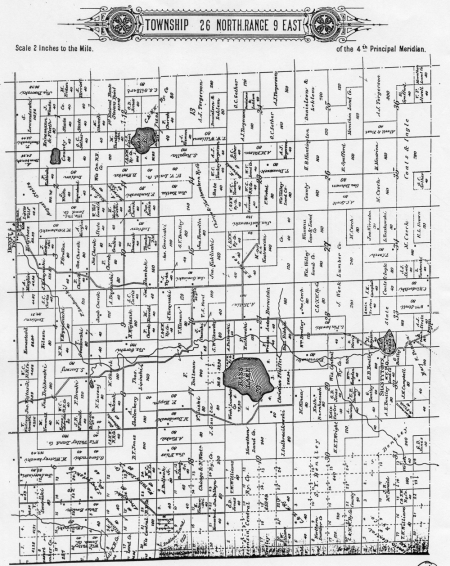Search our Places Database
Shantytown, Village of
Return To List of Locations | Back to Search
For more information on this location, please contact our research library.

Author:
Mary Moltzan
Location:
T. 26 N. - R. 9 E., Sec. 32, Township of Bevent
Background:
Supposedly, Shantytown got its name when brothers Eugene and George Bentley and their father George homesteaded by Lake Wadleigh/Wadley, after moving from Plainfield in about 1900. When relatives visited from Plainfield and saw log cabins or shanties that the brothers and their families lived in, they called it a "shantytown," and the name stuck. Early homesteaders came to farm. Earlier settlers were cutting down hemlock and peeling the bark. The bark was cooked, and the extract was shipped to tanneries in Milwaukee.
Post Office Established:
November 9, 1888
First Postmaster:
Eugene Bentley
About The Post Office:
The P.O. was located in the Bentley home NE 1/4, Section 32, Bevent Township (Pike Lake Township at the time). It was discontinued on July 31, 1909, and service was transferred to Holt.
Churches:
The first church mentioned was called The Crusader Church which stood near the south shore of the lake (Section 33?).
Industry:
Bark mill
Farming:
Dairy and potato farming
Stories:
In 1862, the southwest wind was hot, and there was a crackling and roaring in the pine and hemlock tops as flames billowed high into the spring sky. The women and the children came running out of the four houses, and the men came running from the bark mill, shouting for help and safety. There were boats down on the shore, for the ice had melted from the lake. The women and children were huddled into the boats, and the men walked into the lake and held the boats. They went as far as they could without losing a hold on the floor of the sloping shore. The heat from the fire, as it roared over their houses and the mill, was almost unbearable. To cut the burning heat, the women and children crouched behind the open lid of a trunk which had been brought. The fire finally ended. They had saved their own lives but lost all they owned except the clothes on their backs and the things they carried in the trunk and their hands. So ended the mill and the four houses, but that did not stop the settling of southern Marathon County.

